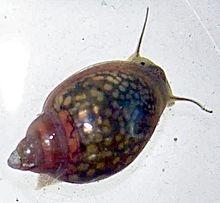
Ampullariidae, whose members are commonly known as apple snails, is a family of large freshwater snails that includes the mystery snail species. They are aquatic gastropod mollusks with a gill and an operculum. These snails simultaneously have a gill and a lung as functional respiratory structures, which are separated by a division of the mantle cavity. This adaptation allows these animals to be amphibious. Species in this family are considered gonochoristic, meaning that each individual organism is either male or female.

Planorbidae, common name the ramshorn snails or ram's horn snails, is a family of air-breathing freshwater snails, aquatic pulmonate gastropod molluscs. Unlike most molluscs, the blood of ram's horn snails contains iron-based hemoglobin instead of copper-based hemocyanin. As a result, planorbids are able to breathe oxygen more efficiently than other molluscs. The presence of hemoglobin gives the body a reddish colour. This is especially apparent in albino animals.
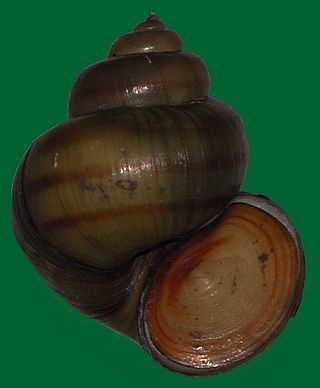
Viviparidae, sometimes known as the river snails or mystery snails, are a family of large aquatic gastropod mollusks, being some of the most widely distributed operculate freshwater snails.

Lymnaeidae, common name the pond snails, is a taxonomic family of small to large air-breathing freshwater snails, aquatic pulmonate gastropod mollusks, that belong to the clade Hygrophila.
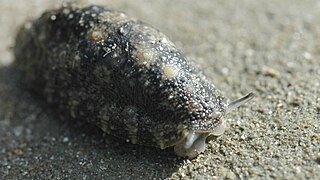
Onchidiidae are a family of small, air-breathing sea slugs. They are shell-less marine pulmonate gastropod molluscs. Onchidiidae is the only family within the superfamily Onchidioidea.

Vertiginidae, common name the whorl snails, is a family of small, air-breathing land snails, terrestrial pulmonate gastropod molluscs or micromollusks in the superfamily Pupilloidea.

Physella is a genus of small, left-handed or sinistral, air-breathing freshwater snails, aquatic pulmonate gastropod mollusks in the family Physidae.

Physella acuta is a species of small, left-handed or sinistral, air-breathing freshwater snail, an aquatic gastropod mollusk in the family Physidae. Common names include European physa, tadpole snail, bladder snail, and acute bladder snail.

Physa is a genus of small, left-handed or sinistral, air-breathing freshwater snails, aquatic pulmonate gastropod molluscs in the subfamily Physinae of the family Physidae.

Clausiliidae, also known by the common name door snails, is a taxonomic family of small, very elongate, mostly left-handed, air-breathing land snails, sinistral terrestrial pulmonate gastropod mollusks.
The Snake River physa snail, scientific name Physella natricina, is a species of freshwater snail, an aquatic gastropod mollusk in the family Physidae. This species is endemic to Idaho in the United States.
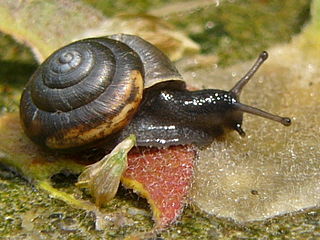
Hygromiidae is a taxonomic family of small to medium-sized air-breathing land snails, terrestrial pulmonate gastropod mollusks in the superfamily Helicoidea.

Pleuroceridae, common name pleurocerids, is a family of small to medium-sized freshwater snails, aquatic gilled gastropod mollusks in the superfamily Cerithioidea.These snails have an operculum and typically a robust high-spired shell.
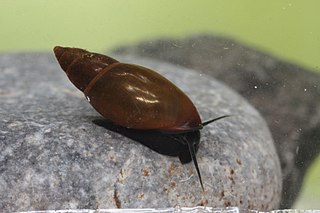
Aplexa hypnorum, or by the common name, the moss bladder snail, is a species of small air-breathing freshwater snail, an aquatic pulmonate gastropod mollusk in the family Physidae, a family which are sometimes known as the bladder snails.

Vitrinidae is a family of small, air-breathing land snails, terrestrial pulmonate gastropod mollusks in the superfamily Limacoidea.

Hygrophila is a taxonomic superorder of air-breathing freshwater snails, aquatic pulmonate gastropod mollusks within the clade Panpulmonata.

Physa skinneri, common name the glass physa, is a species of freshwater snail, an aquatic gastropod mollusc in the family Physidae.
Sibirenauta sibirica is a species of small air-breathing freshwater snail, an aquatic pulmonate gastropod mollusk in the family Physidae, a family which are sometimes known as the bladder snails.
